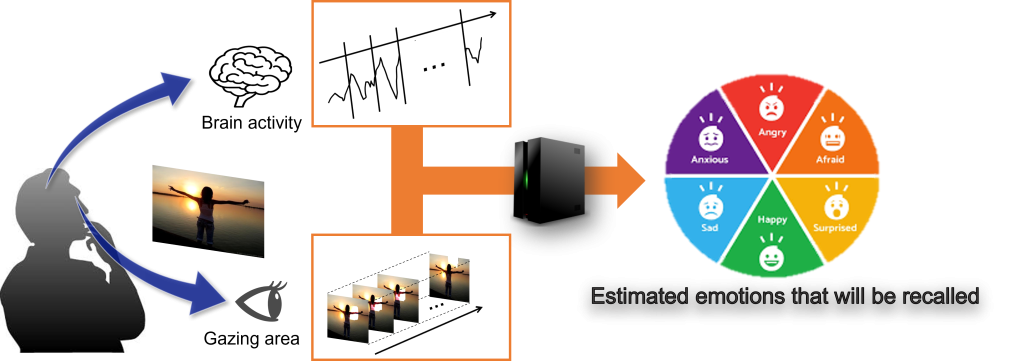Brain Science – Promoting Research and Development of Next-generation AI Through Collaboration Between AI and Brain-
We perceive a complex world and make appropriate decisions from an enormous number of options, and we can learn from our surroundings. Most of this processing is handled by the brain. Therefore, it is essential to elucidate brain functions and link them with AI to create next-generation innovations. Deep learning, which is inspired by human cognitive mechanisms, has contributed to the rapid development of AI technology, and it is expected that unprecedented technologies will be created by referring to brain structures and mechanisms in the future. In Laboratory of Media Dynamics, we are working on elucidating the human knowledge acquisition process by promoting “AI × brain” research.
Brain and AI Communication
Changes in blood flow caused by brain activity can be measured by functional MRI (fMRI). It is known that cerebral blood flow changes when we see something. It is expected to elucidate human cognitive activities by capturing these changes.
In Laboratory of Media Dynamics, we are conducting research on extracting information about cognition from brain activity data. Specifically, we are applying a task called Visual Question Answering (VQA) to brain activity analysis. In this task, a person is presented with an image and a question about that image and given the correct answer to that question. This task extracts various information from brain activity data, such as information about the object the person is gazing at.

Preference Estimation Using Brain Activity Information
With the spread of video distribution services and e-commerce, technologies that enable personalized recommendations are needed, and it is important to accurately estimate the interests of individuals. It has been shown that biological signals such as brain activity information obtained from humans contain information related to human preferences.
In Laboratory of Media Dynamics, we have constructed an AI system that can learn the correlation between biological signals obtained from humans, such as exploring correlations between information about brain activities and preferences. In this way, we reveal the relationship between biological signals and interests. By applying this technology, we are promoting cutting-edge research on preference estimation by introducing gaze information in addition to brain activity information.

AI Human-Centric AI
Recent AI technologies have achieved high classification accuracy by acquiring regions of interest from a large number of images. On the other hand, the classification accuracy of AI is limited due to the difficulty of collecting a large number of images for classification of complex images in the real world, such as social infrastructure data.
For image classification tasks that require such specialized knowledge, the Laboratory of Media Dynamics has overcome the accuracy limitation of conventional AI by introducing a new mechanism that maximizes the correlation between the information obtained from the image and the brain activity of the person. This invention has led to an international patent application from Hokkaido University.

Multi-device Human Sensing
Skill Level Classification by Multi-sensor
The skill level in sports can be read from the body movements. By analyzing multimodal information obtained from gaze and motion sensors, we have developed an AI technology that can accurately estimate the skill level of players.
Interest Estimation by Behavior Analysis
We have developed a technology for estimating interest in a product by analyzing human movement toward the product using camera images taken from various angles and eye information.
Cooperative Institutions
- Sapporo City.
- East Nippon Expressway Company Limited.
- Tokyo Metro Corporation.
- Sapporo River Office, Sapporo Development and Construction Department, Hokkaido Development Bureau, Ministry of Land, Infrastructure, Transport and Touri.

